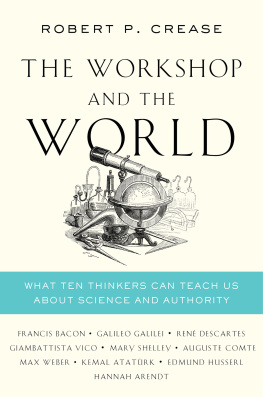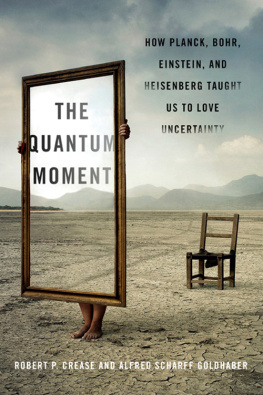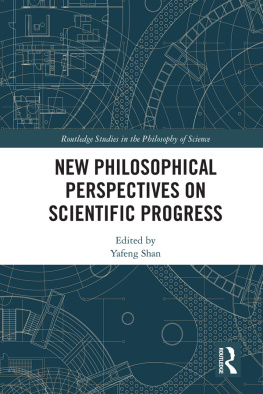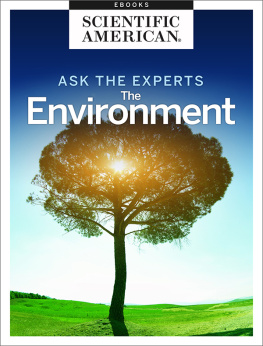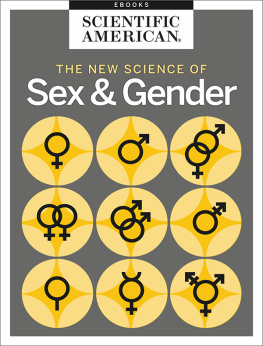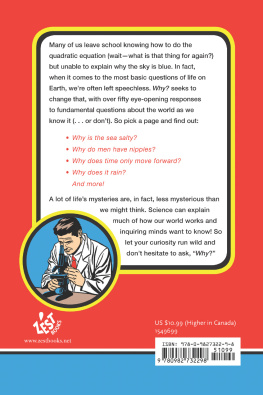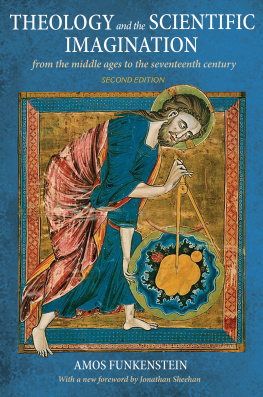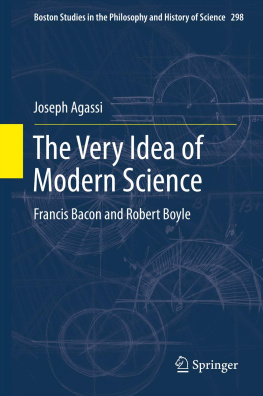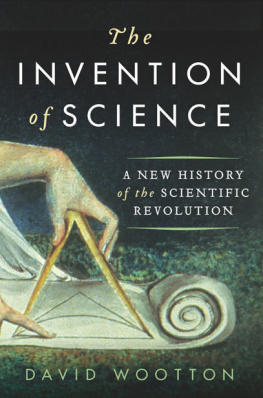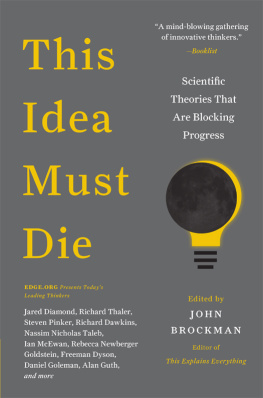Contents
Guide

ALSO BY ROBERT P. CREASE
The Quantum Moment: How Planck , Bohr , Einstein , and Heisenberg Taught Us to Love Uncertainty , by Robert P. Crease and Alfred Scharff Goldhaber
World in the Balance: The Historic Quest for an Absolute System of Measurement
The Great Equations: Breakthroughs in Science from Pythagoras to Heisenberg
The Prism and the Pendulum: The Ten Most Beautiful Experiments in Science
Making Physics: A Biography of Brookhaven National Laboratory
The Play of Nature: Experimentation as Performance
The Second Creation: Makers of the Revolution in Twentieth - Century Physics , by Robert P. Crease and Charles C. Mann
Peace & War: Reminiscences of a Life on the Frontiers of Science , by Robert Serber with Robert P. Crease
J . Robert Oppenheimer: A Life , by Abraham Pais with Robert P. Crease
TRANSLATED BY ROBERT P. CREASE
What Things Do: Philosophical Reflections on Technology , Agency , and Design , by Peter-Paul Verbeek
American Philosophy of Technology: The Empirical Turn , edited by Hans Achterhuis
THE
WORKSHOP
AND THE
WORLD

WHAT TEN THINKERS
CAN TEACH US ABOUT
SCIENCE AND AUTHORITY

ROBERT P. CREASE

Copyright 2019 by Robert P. Crease
All rights reserved
First Edition
For information about permission to reproduce selections from this book, write to Permissions, W. W. Norton & Company, Inc., 500 Fifth Avenue, New York, NY 10110
For information about special discounts for bulk purchases, please contact W. W. Norton Special Sales at specialsales@wwnorton.com or 800-233-4830
Book design by Marysarah Quinn
Production manager: Lauren Abbate
The Library of Congress has cataloged the printed edition as follows:
Names: Crease, Robert P., author.
Title: The workshop and the world : what ten thinkers can teach us about science and authority / Robert P. Crease.
Description: New York : W. W. Norton & Company, [2019] | Includes bibliographical references and index.
Identifiers: LCCN 2018047219 | ISBN 9780393292435 (hardcover)
Subjects: LCSH: ScienceMethodology. | ScienceSocial aspects. | SciencePolitical aspects. | Science and state. | Discoveries in science.
Classification: LCC Q175 .C8858 2019 | DDC 306.4/5dc23
LC record available at https://lccn.loc.gov/2018047219
ISBN 9780393292442 (ebook)
W. W. Norton & Company, Inc., 500 Fifth Avenue, New York, N.Y. 10110
www.wwnorton.com
W. W. Norton & Company Ltd., 15 Carlisle Street, London W1D 3BS
For Stephanie,
undeniably
CONTENTS



IV

I N THE SUMMER OF 2018, I went to see the Mer de Glace, the longest glacier in France. I knew what it looked likeor thought I did. For nearly three centuries it has been one of the most painted, photographed, and described natural features in Europe. From the northern slopes of Mont Blanc, the highest mountain in the Alps, it twists its way slowly and inexorably between the peaks like a giant icy crocodile. Its jagged white blocks inspired Goethe, Wordsworth, and other poets. In Mary Shelleys novel Frankenstein , the glaciers wildness is the backdrop for the monsters first confrontation with the creator who abandoned him. Many artists, including J. M. W. Turner, Caspar David Friedrich, and John Ruskin, painted its dramatic and disordered surface in images that ran from majestic and ethereal to terrifying. Visitors compared it to a hurricane-whipped ocean that had suddenly frozen and turned sheet-white.
I boarded a rack railway that had been built in 1908 to ferry tourists from the French town of Chamonixa ski resort and hiking center near Frances border with Italyto Montanvert, a spot in the mountains near where they could step onto the glacier. The trip took twenty minutes. I found myself amid pine trees on one side of a relatively straight canyon lined by two rock walls. The ground was mossy, with no trace of snow or ice, and the mighty glacier was not in sight. To see it, I was told, I either had to hike down or take a cable car. I hiked.

The trail ambled through trees and bushes. After a minute or so, I came to a sign in a patch of purple foxglove flowers: LEVEL OF THE GLACIER , 1820.
A few minutes later, farther down, I came across a similar marker on a lichen-speckled granite boulder. This one had the date 1890. Still later, after descending concrete treads, I passed markers reading 1920 and then 1985. Though these spots were once high points of the glacier, I saw no trace of ice or snow. The concrete treads changed to moveable aluminum stairs, the canyon walls grew steeper, and the next markers were not attached to boulders but directly to the valleys sheer rock walls. Forty-nine steps down took me to 1990, 86 more to 2001, 14 more to 2003, and 148 more to 2010. Still no ice. I was beginning to have the morbid feeling that I was descending into a large coffin. After 61 more steps I came to the final marker: 2015.

At this spot, just three years before, I would have been standing on a cold, white block of ice; instead I stared at dry rock. The glacier had melted so much that its tip had receded farther up into the valley, and I had to walk a few hundred more feet before I could get to it. Overall, my hike had taken me some 2,000 feet down vertically and about one-third of a mile horizontally. I was now at the bottom of a valley, about one-half mile across, which the Mer de Glace had once filled. It was drab and rocky, with no vegetation; occasionally ribbon-like wisps of clouds blew by overhead. Not only was the once-mighty glacier miniscule compared to its past portraits, but also its surface was flat and gray, covered with rocks and dirt.
The Mer de Glace is melting. How quickly, and what would become of it? I had no idea.
At the glacier I met Luc Moreau, a glaciologist associated with the EDYTEM Laboratory, cosponsored by the Savoie Mont Blanc University and the National Center for Scientific Research of France. Tall and brawny, Moreaus robust physique is work-related. His web page displays pictures of him zip-lining over ravines and straddling crevasses while tracking the structure and movement of glaciers. He works at the Mer de Glace, measuring and helping to model it. A few weeks before, he had installed the final marker that I had seen.
Of all the Earths surface features, Moreau told me, glaciers are the most reactive to climate. Climate makes them, and climate takes them away. The Mer de Glace fluctuates annually, accumulating snow and ice in winters, which it sheds in summers. But overall it is not only melting but slowing downand as the signs show, at an alarming rate. In the nineteenth century, a short path was enough to take visitors from the trailhead where I had begun. For a brief period in the 1970s the glacier swelled, but soon continued to recede. By the 1980s, the trail had grown so long that a cable car was built to ferry less venturous travelers to the glacier. In the 2000s, the tip of the glacier receded past the cable-car stop, and aluminum stairs and ramps were added. The melting is continuing at an ever-faster pace. In the 21 years between 1995 and 2016, its height dropped the same amount as in the previous 170 years. The glaciers melting has made its surface unsafe for visitors, and Moreau and other glaciologists dig an ice cave each spring that visitors can enter, covering the ice above the cave with white tarps to keep it cold and stable.

